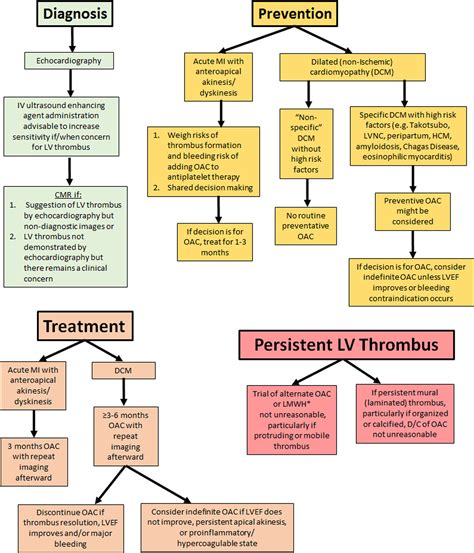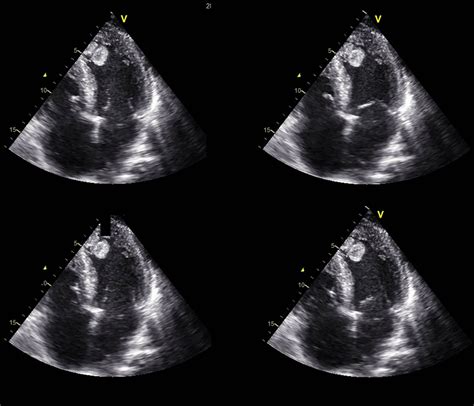lv thrombus medical term | Lv thrombus treatment guidelines nhs lv thrombus medical term Systemic anticoagulation is considered first-line medical therapy for LVT, as it reduces the risk of systemic embolism. There are also . See more COVID-19 Maps, Reports and Trends – Southern Nevada Health District | COVID-19. The Health District updates its COVID-19 dashboard and reports each Wednesday. NOTE: Changes are being made to the Southern Nevada Health District’s COVID-19 reports due to the availability of data and information.
0 · risk factors for Lv thrombus
1 · left ventricular thrombus after infarction
2 · left ventricular thrombus after heart attack
3 · esc guidelines Lv thrombus
4 · chest guidelines Lv thrombus
5 · causes of left ventricular thrombus
6 · Lv thrombus treatment guidelines nhs
7 · Lv thrombus prevention guidelines
Las Vegas is filled to the brim with romantic spots, with some of the most romantic being the Bellagio Fountains, the High Roller, the Paris’ Eiffel Tower, and the Venetian’s Gondola Rides. There are countless places to “enjoy the moment” with your partner, all while having fun at the same time!
Left ventricular thrombus is a blood clot (thrombus) in the left ventricle of the heart. LVT is a common complication of acute myocardial infarction (AMI). Typically the clot is a mural thrombus, meaning it is on the wall of the ventricle. The primary risk of LVT is the occurrence of cardiac embolism, in which the thrombus . See more
LVT occurs most often during the first 2 weeks following AMI. AMI patients most at risk display the 3 characteristics of Virchow's triad See more
risk factors for Lv thrombus
left ventricular thrombus after infarction
After an AMI, people should be treated to prevent LVT formation. Aspirin plus an oral anticoagulant such as warfarin are suggested for individuals at risk for thromboembolic . See moreEchocardiography is the main diagnostic tool for LVT. A distinct mass is visible in the left ventricle. Computed Tomography and See moreSystemic anticoagulation is considered first-line medical therapy for LVT, as it reduces the risk of systemic embolism. There are also . See moreThe rate of LVT formation after AMI is thought to be declining due to the use of better therapies and percutaneous coronary intervention used . See more
Despite the many advances in cardiovascular medicine, decisions concerning . The following are key points to remember about this scientific statement from . Left ventricular (LV) thrombus may develop after acute myocardial infarction (MI) .Left ventricular (LV) thrombus is a feared complication of LV dysfunction associated with high .
Left ventricular thrombus (LVT) is a serious complication of acute myocardial infarction (MI) .Left ventricular thrombosis (LVT) is a well‐known complication of acute myocardial infarction, . The optimal management of left ventricular thrombus (LVT) remains .
Left ventricular thrombus (LVT) is a well-known complication of acute MI (AMI) .Management of LV thrombus (LVT) is challenging and crucial to prevent the potential .Left ventricular thrombus is a blood clot (thrombus) in the left ventricle of the heart. LVT is a common complication of acute myocardial infarction (AMI). [1][2] Typically the clot is a mural thrombus, meaning it is on the wall of the ventricle. [3] The primary risk of LVT is the occurrence of cardiac embolism, [1][4] in which the thrombus .
Despite the many advances in cardiovascular medicine, decisions concerning the diagnosis, prevention, and treatment of left ventricular (LV) thrombus often remain challenging. There are only limited organizational guideline recommendations with regard to LV thrombus. The following are key points to remember about this scientific statement from the American Heart Association (AHA) for the management of patients at risk for and with left ventricular (LV) thrombus: Decisions concerning the diagnosis, prevention, and treatment of LV thrombus remain challenging. Left ventricular (LV) thrombus may develop after acute myocardial infarction (MI) and occurs most often with a large, anterior ST-elevation MI (STEMI). However, the use of reperfusion therapies, including percutaneous coronary intervention and fibrinolysis, has significantly reduced the risk.Left ventricular (LV) thrombus is a feared complication of LV dysfunction associated with high rates of systemic embolism, morbidity, and mortality. Traditionally, LV thrombus has been associated with acute myocardial infarction (MI).
left ventricular thrombus after heart attack
Left ventricular thrombus (LVT) is a serious complication of acute myocardial infarction (MI) and also non-ischemic cardiomyopathies. We performed a narrative literature review, manual-search of reference lists of included articles and relevant reviews.Left ventricular thrombosis (LVT) is a well‐known complication of acute myocardial infarction, most commonly seen in anterior wall ST‐segment elevation myocardial infarction (STEMI). . 1 Department of Medicine, Einstein Medical Center, Philadelphia, Pennsylvania. Find articles by Natee Sirinvaravong. 1, Kevin Bryan Lo. . Long‐term . The optimal management of left ventricular thrombus (LVT) remains controversial. Despite decreasing incidence with improvements in early percutaneous revascularization, LVT is estimated to occur after 6.3% of ST elevation myocardial infarctions.1 Because a key tenet of Virchow's triad for thrombosis includes blood stasis, nonischemic . Left ventricular thrombus (LVT) is a well-known complication of acute MI (AMI) and non-ischaemic cardiomyopathies. 1 The presence of LVT increases the risk of embolic complications, such as stroke or systemic embolisation, hence treatment with oral anticoagulation is often indicated. 2 The European and American guidelines recommend a period of .
Management of LV thrombus (LVT) is challenging and crucial to prevent the potential development of thromboembolic complications such as stroke. Anticoagulation with warfarin is recommended for the prevention of thromboembolic events, but novel oral anticoagulants (NOAC) have been used in clinical practice without supporting evidence.Left ventricular thrombus is a blood clot (thrombus) in the left ventricle of the heart. LVT is a common complication of acute myocardial infarction (AMI). [1][2] Typically the clot is a mural thrombus, meaning it is on the wall of the ventricle. [3] The primary risk of LVT is the occurrence of cardiac embolism, [1][4] in which the thrombus .
Despite the many advances in cardiovascular medicine, decisions concerning the diagnosis, prevention, and treatment of left ventricular (LV) thrombus often remain challenging. There are only limited organizational guideline recommendations with regard to LV thrombus.
The following are key points to remember about this scientific statement from the American Heart Association (AHA) for the management of patients at risk for and with left ventricular (LV) thrombus: Decisions concerning the diagnosis, prevention, and treatment of LV thrombus remain challenging. Left ventricular (LV) thrombus may develop after acute myocardial infarction (MI) and occurs most often with a large, anterior ST-elevation MI (STEMI). However, the use of reperfusion therapies, including percutaneous coronary intervention and fibrinolysis, has significantly reduced the risk.Left ventricular (LV) thrombus is a feared complication of LV dysfunction associated with high rates of systemic embolism, morbidity, and mortality. Traditionally, LV thrombus has been associated with acute myocardial infarction (MI).Left ventricular thrombus (LVT) is a serious complication of acute myocardial infarction (MI) and also non-ischemic cardiomyopathies. We performed a narrative literature review, manual-search of reference lists of included articles and relevant reviews.


Left ventricular thrombosis (LVT) is a well‐known complication of acute myocardial infarction, most commonly seen in anterior wall ST‐segment elevation myocardial infarction (STEMI). . 1 Department of Medicine, Einstein Medical Center, Philadelphia, Pennsylvania. Find articles by Natee Sirinvaravong. 1, Kevin Bryan Lo. . Long‐term . The optimal management of left ventricular thrombus (LVT) remains controversial. Despite decreasing incidence with improvements in early percutaneous revascularization, LVT is estimated to occur after 6.3% of ST elevation myocardial infarctions.1 Because a key tenet of Virchow's triad for thrombosis includes blood stasis, nonischemic . Left ventricular thrombus (LVT) is a well-known complication of acute MI (AMI) and non-ischaemic cardiomyopathies. 1 The presence of LVT increases the risk of embolic complications, such as stroke or systemic embolisation, hence treatment with oral anticoagulation is often indicated. 2 The European and American guidelines recommend a period of .
esc guidelines Lv thrombus

chest guidelines Lv thrombus
causes of left ventricular thrombus
Lv thrombus treatment guidelines nhs
Product Details. Baby Wipes. Fragrance free. Wipe dimensions: 7.1" x 8". 100 wipes per pack. 9 soft packs with flip-top lids. 900 wipes total. More Information: Formulated and made with purified water to provide a gentle clean.
lv thrombus medical term|Lv thrombus treatment guidelines nhs

























